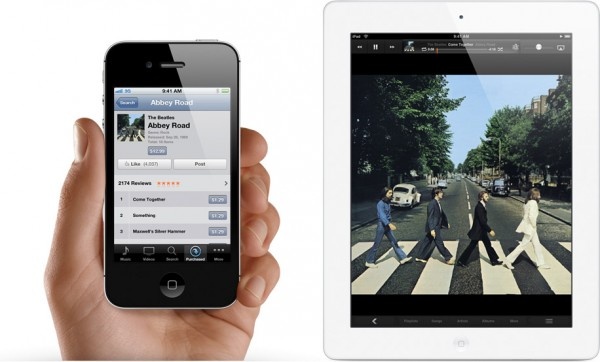Howto: Moving to the iCloud
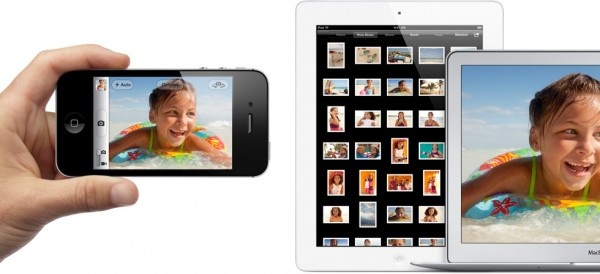
Before we start, though, here's a quick video, right from Apple, explaining the concept.
iPhone Unleashed
iCloud wants to be the basis of our wireless future. The basics of iCloud are contained in the settings app on the iPhone and iPad, the System Preferences on a Mac, and the iCloud Control Panel on a Windows PC. First up, we needed to update our iTunes to version 10.5, then our iPhone 4 to iOS 5, via that new iTunes. When activating a new iOS device, users will see a couple of new screens to walk them through the iCloud setup. The best way to do this is to log in with an Apple ID, either one that already exists, or creating a new one from the iCloud screens.
For details on how to deal with Apple accounts in a family or work group, check our article iOS 5, iCloud, and iTunes – Set Up in a Multiple Device Family. If a MobileMe user, transition that account to an iCloud one here: Me.com. In addition, users can use the iCloud web interface if away from their own specific devices: iCloud.com.
Hit the jump for even more info about iCloud.
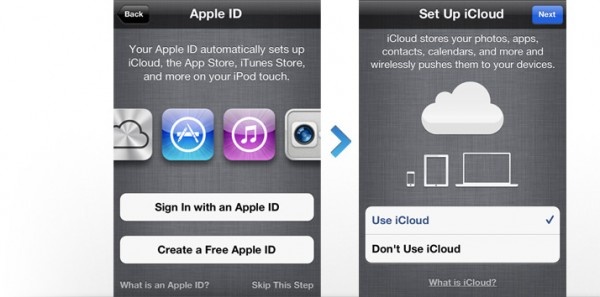
One Screen to Rule Them All. Sort of.
Once we got our devices set up, it was a simple matter of tapping into the Settings app and choosing what we wanted to sync and what we didn't. We found that when we tried to enable Notes syncing, we were prompted to create a free @me.com address to enable the feature. This first iCloud settings screen also allows users to enable Photo Stream and Documents & Data, two really powerful and almost magical features of iCloud. Take a picture on one device, and it will be sent to all other devices set up with the Photo Stream feature enabled with the same Apple ID. Create a Pages or Keynote document on the iPad and then it shows up on the iPhone, ready for editing there.

On our iPad, for instance, we were prompted to set up Photo Stream the first time we went to the Photos app after updating to iOS 5. Once enabled, the app shows a Photo Stream tab at the top of the page, and all photos taken with our iPhone since setting it up with Photo Stream were displayed. The same thing happens in the iPhoto app on our OS X Lion Mac, with a Photo Stream tab in the left sidebar. What an amazing, labor free way to get our photos to everything we use.
The Storage & Backup Conundrum
So we want to cut the cord and live PC-free - one thing of concern is keeping our iOS devices backed up. This is a silent feature when doing an iTunes sync, but we need to be more cognizant of it via iCloud in case our device needs to be replaced. iCloud includes the ability to do a backup, and even includes a free 5 GB of storage space to do so.
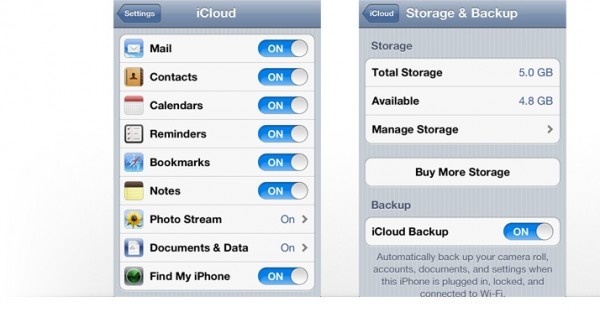
At the bottom of the iCloud preferences screen, there is a Storage & Backup button. Tapping that leads to the preference screen that showed us what we had available for our storage options. Users start with 5GB free and can add more storage, should they need it, for fairly competitive prices. If iCloud Backup is on, then the iOS device will automatically back up the camera roll, accounts, documents and settings when the device is plugged in, locked, and connected to Wi-Fi. When we enabled our iPad & iPhone for iCloud backup, we were warned that we would no longer backup to iTunes when we connected to the computer. Bring it on! The initial backup to iCloud can take a while, but incremental backups afterward are much quicker. And hey, they usually happen in the middle of the night while our iPhone is charging - we don't even notice them.
Check out this quick CNET User video to see how that all looks:
Tweaking the iCloud Backup
Each iCloud enabled device has options - use them. The first screen, accessed by tapping "Manage Storage" on each individual device, shows a short list of some apps that are backed up and the storage they are taking up. A "Show All Apps" option at the end of the list will in fact show users all the apps they have on the device. By default, all apps are backed up - users can remove them from backup, which might be a good idea for apps that store lots of data, like Spotify, Rdio, Zinio, and others.
Once we turned off our Camera Roll backup (7.7 G on the iPhone alone), our backup size across both our iPhone and iPad, was a mere 1 G or so. We pulled all the photos off of our devices onto our Mac before this, of course, and will use the Photo Stream function to make sure all new photos are synced to the Mac as well. It's still hard to think of the Mac as anything other than a hub, since it's less vulnerable to data loss or theft than a mobile device.
iCloud backs up:
- Purchased music, TV shows, apps, and books
- Photos and video in the Camera Roll
- Device settings
- App data
- Home screen and app organization
- Messages (iMessage, MMS, and SMS)
- Ringtones
iTunes In The Cloud
Accessed in the Store table of the Settings app, users may enable the automatic downloading of music, apps, and books to all enabled devices. Any new purchase will then be sent to all devices connected to the same iTunes account. Even past purchases can be downloaded to all these devices. Users can now access all their purchase history from the iTunes store on any iOS device, Mac, or even Apple TV. Purchase once, download on up to ten devices, five of which can be computers.
As we pointed out in our article about a multi-device family or workgroup, enabling the automatic downloads feature may or may not be in anyone's best interest. While not strictly an iCloud feature, the Store has been pointed to as one of iCloud's features across the web. If automatic downloads are enabled for any one iTunes account, that device will be prevented from accessing any different Apple ID accounts for 90 days. Each individual user will have to decide this one for themselves. If we only had one Apple ID, though, we'd enable this in a minute, as it allows for music, apps and books to be synced to each and every enabled device owned, a magical feature to say the least. USers can enable automatic downloads on up to ten devices, five of which can be computers.
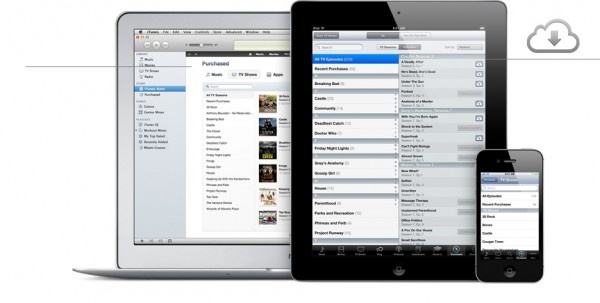
The PC Free Future
Overall, we've found the experience of un-tethering our devices from our Mac fairly pain free. Once we were able to pick and choose what apps to backup, the 5 G of free space seemed fairly generous. We can imagine a hypothetical user who would buy an iPad and an iPhone and never have to purchase a separate computer. Of course, there are potential risks involved with that as well. Trusting all of our data to iCloud is a case of putting all our eggs in one basket. We're not *quite* ready to do so, but not due to any difficulty with the service itself as it now stands. We've carried our PC-free iOS devices around for a couple of weeks now and the backup continues automagically, our photos appear on all our devices, and things seem hunky dory. That could change at any moment, though we think Apple is a calculated risk and willingly place our data in their hands for the time being.



